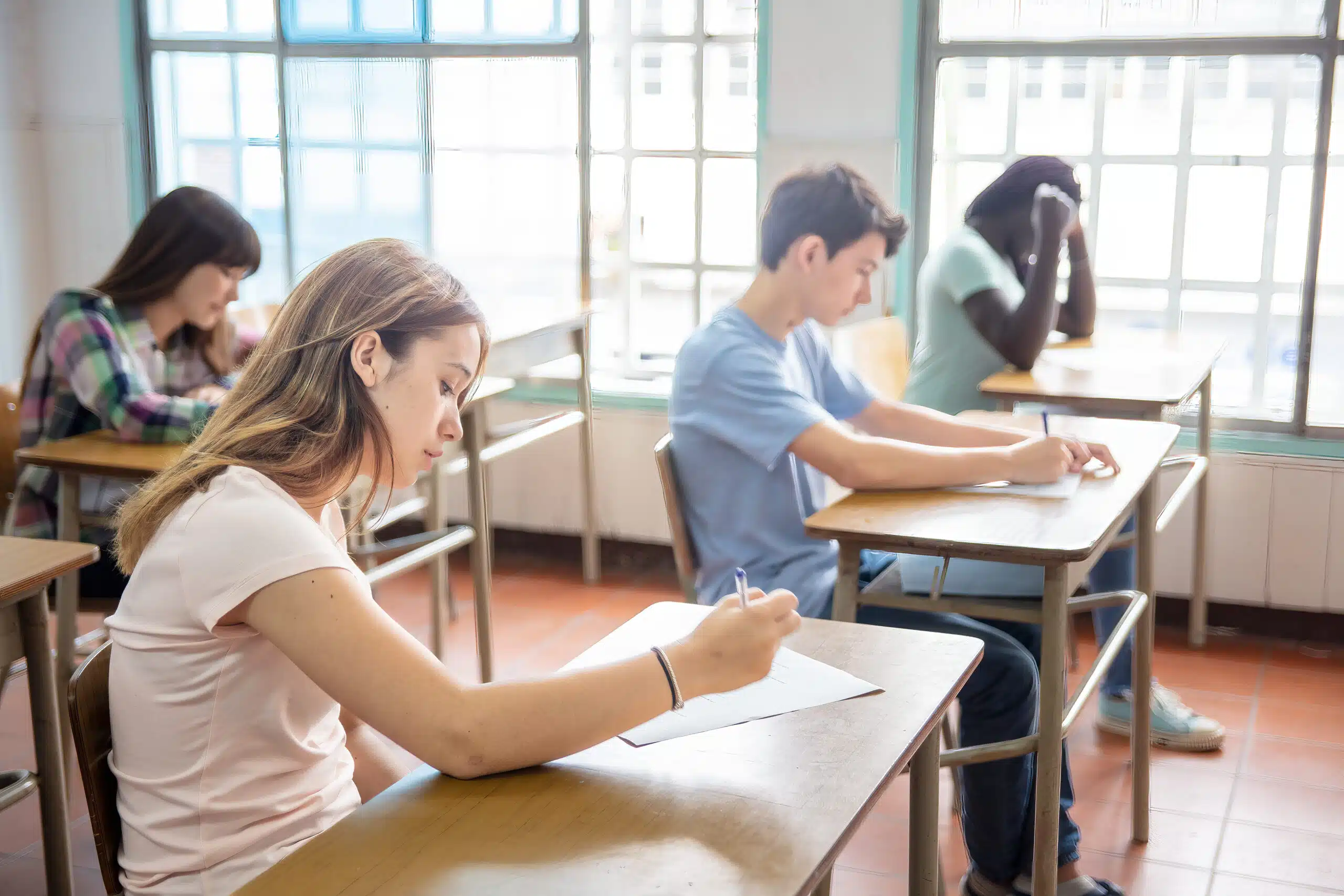
5 Positive Effects of Social Media: It’s Not All Bad
Sometimes, teenagers and adults alike find it difficult to discuss whether there are any positive effects of social media. If you were to ask a teen how he or she feels about social media, you could get a myriad of responses. Most youngsters find social media to be an indispensable tool for maintaining connections with their friends, family, co-workers, and employers.
While the greatest generation, generation X, and others may see social media as an evil that is destroying the ability of the next generation to communicate, current teens and young hipsters in their twenties see it as their primary form of communication.
Employers have begun using text messaging, instant messaging, or Twitter to relay schedule requests and ask questions of employees. Companies and corporations use Facebook, Instagram, Twitter, and LinkedIn to recruit new employees.
And as frustrating as it is for older generations to deal with “text speak” and other newer linguistic gymnastics, those are things that define the current generations’ communication skill set. The platforms of social media have given kids the opportunity to share their opinions, join the societal conversation, and contribute to the narratives of important issues.
With the global nature of technology, kids have the chance to make friends anywhere on Earth. Not only can they use social media platforms like Twitter, but they also have the opportunity to play games with friends around the globe using systems like Xbox and PlayStation, as well as their personal computers. By spending time playing with people in other countries, kids can learn about different cultures and standards of living.
Since the advent of MySpace (the first massive social media platform), people of all ages are able to create pages and communities within the platforms. There are gaming communities, religious groups, sales communities, communities based on diagnoses, study groups, and private friend communities. With these communities, kids have an easier time staying in contact with their friends and have a place they can go to find support in tough times.
Support is another one of the positive effects of social media. Posting a challenge to help raise money for a good cause has become very popular. People can create awareness of a need and encourage the members in their communities to help support the cause with donations of time, in-kind gifts, or financial support.
These five positive effects of social media can give parents, teachers, and counselors hope in the hours that students spend online.
Social Media as an Employment Resource
As early as the late 1990s, finding a job was still about going place to place, mailing in resumes, or answering advertisements in the newspaper. When email became one of our primary forms of communication, we started emailing our resumes instead of using “snail mail”. Next came employment websites like Monster and Career Builder – and most of the newspapers started putting their employment sections online.
Today, there are dozens of employment sites. Some cover all types of jobs, like Zip Recruiter; others are specific to an industry. Some, like Snag-a-Job, are geared toward people looking for part-time work in restaurants, hospitality, or retail. If you are an engineer, you are best served by EngineerJobs.com. Monster.com offers positions in the military, high-level executive positions, and positions requiring post-graduate degrees.
But, the next evolution in finding employment is social media. There is an old adage that finding a job is about who you know. There is definitely some truth to that. And since social media is all about who we know, being able to look for a job is another one of the positive effects of social media.
Let’s say your company is looking for a new marketing director. The human resources department will post the position on any number of job boards and put up an internal post; then, they just wait for applications and resumes to come in. This is a good strategy as they will have the chance to interview internal candidates who won’t need orientation or much training, and they will receive dozens if not hundreds of resumes from the job boards.
However, you have seen the internal post. You know you have friends who are always looking for new opportunities as well as friends who have been out of work for many months. You can find the external link to the job on one of the job boards, copy the link, and then post it on every social media account you have. Let’s say you have about 500 friends on Facebook and 200 Twitter followers. You have just reached 700 people the job advertisement may not have reached. You also may have just given any number of friends or followers the opportunity to apply for a job and you can vouch for them.
As this becomes a more accepted practice for job posting options, many companies will begin to post available job opportunities on their social media pages. Most major companies and corporations have a social media footprint. Once they have seen the success of word of mouth through social media, they will be more convinced of its viability as a means of hiring new employees.
Social Media Gives Kids a Voice
When it comes to kids having a voice in society, there remains a bias against young people. Adults tend to tune out the voices and messages of children and teens because they lack life experience. Adults don’t believe that youngsters have anything of value to add to the social conversation. This is simply not true.
Because kids have a unique perspective – one not cluttered by a lifetime of biases and various experiences – they can often inject new thinking into the social conversation. One of the positive effects of social media is that they can come up with new ideas that could improve upon the old ways of thinking. They can apply the evolution of technology (something they tend to know better than adults) and social media to any number of situations.
For example, if a teen has a parent who is suddenly out of work after serving the same employer for decades, that parent may have absolutely no idea how to look for a new job or what new training is available to improve his or her chances at finding a new job. The parent could certainly pay a professional headhunter or job counselor, but the teens in their lives might be the best, free choice they have at their disposal.
You can also consider that kids have very different perspectives on things like politics, religion, law enforcement, and other hot button issues. You’ve heard the saying, “From the mouths of babes”, meaning that sometimes the best solution is one seen with young, clear eyes, unclouded by prejudice. For instance, kids can use social media to comment on the jobs market, community policing, or church activities. Their opinions can carry some weight if adults choose to pay attention rather than being dismissive.
Today’s teens also have more disposable income than teens from a generation ago. They can use their money as their voice by supporting social media brands and innovators. YouTube and Instagram are the hottest places to sell yourself. Artists and singers post videos and photos that can entice social media users to promote and buy their products. Aspiring cooks, make-up artists, and designers of every stripe can also use these social media markets to showcase their talents. Gamers become social media influencers who get paid to play video games on Twitch.
No matter how you view it, young people can use social media to express themselves in a way that wasn’t possible even a decade ago. Social media is a 24/7 open market of ideas where anyone can present their views and find their voice in the social conversation. Kids are the primary users of this media and adults would be well-advised to check in on social media to see what kids have to say. They might be surprised.
Social Media Expands One’s Worldview
All of us can probably agree that our community growing up was small. Not necessarily the city or town we grew up in, but the community of family, friends, schoolmates, neighbors, etc. If you think back, how many people in your neighborhood came from other nations or other cultures?
We tend to grow up in a bubble – a very narrow slice of society. When we graduate high school and either go to college or enter the job market, our bubble bursts and we are inundated with new people, new cultures, new values, and new standards. It’s a lot to soak in.
Because of the positive effects of social media, kids today may still have a physical bubble of community, but their social media world is infinite. They can meet and make friends with people all over the globe. A lot of kids do this through gaming. Consoles like Xbox and Playstation allow players to game with anyone in the world who has a WiFi connection. Personal computers have the same ability. Many PC games, like World of Warcraft, bring people together in teams and they talk to each other through the game using headsets.
Social media platforms like Twitter, Instagram, and Facebook have the same reach. Anyone can click on a social media link and be connected with someone who shares their interests. This can lead to a great friendship or even business collaborations. The use of social media gives everyone a chance to look beyond their physical location and expand how they view the world.
Social Media Creates Support Communities
Another one of the positive effects of social media is the creation of support communities. Oftentimes, people will feel isolated and lonely. For people with mental illness, this is especially true. But, when people who need others join a forum or page with others who have the same struggles, it can mitigate their feelings of isolation and loneliness.
A search of Facebook can lead to hundreds of pages for groups with mental illness, terminal illness, family caretakers, and so much more. For patients with chronic or terminal illnesses who can’t physically go to support groups, these social media groups are an essential tool. The patients are given the opportunity to talk about their issues and support one another through bad times.
There are other groups that live outside of so-called normal society and one of the positive effects of social media is that it has given them a place to keep in touch. One example would be bikers. While there are, of course, dangerous biker gangs, there are also groups of bikers who are all veterans, are all Christians, are raising awareness about child abuse, and are building homes for Habitat for Humanity. The easiest way for the groups to stay in touch and to inform the public of their purpose and upcoming events is social media.
On the lighter side, there are groups on social media for quilting, supporting your favorite sports team, churches, youth groups, schools, businesses, and hundreds of other organizations. Social media has become an important tool for people everywhere to keep in touch and be kept aware of what is happening in their world.

Social Media Increases Social Awareness of Causes
Twenty years ago, if we wanted to be charitable and find out about causes needing help, we would have to read the paper and hope to find something or go to the library and do some research. One of the positive effects of social media is that awareness of causes is booming. Teens are even getting involved. Remember the ice bucket challenge? Thousands of people, if not millions of people participated through social media, raising funds and awareness about ALS.
Today, most charities and charitable causes have their own social media pages, followers, YouTube videos, Twitter feeds, and more. One of the toughest challenges a charitable organization can face is raising money. Raising money requires visibility, success stories, and a return on investment for the donor. Thanks to social media, large donors get exposure on Twitter, Instagram, Facebook, and in traditional media. This free publicity is great for the donor and the charity benefits from the donation.
Beyond charitable organizations, there are causes out there that are all about awareness. Celebrities, politicians, billionaire businessmen, and sports icons are using their fame and notoriety to bring attention to societal issues: police brutality, election fraud, education problems, lack of government accountability, poverty, and so much more.
And while some may argue that celebrities and other notables are just using the issue for their own gain (and this can be a valid point), the larger, more positive argument is that social media is getting the information out there – creating awareness is one of the positive effects of social media.
Conclusion
Social media can very well be a negative influence. However, it is important to acknowledge that there are positive effects of social media. Whether it’s finding a job through a friend on social media, finding a way to express your voice, expanding your worldview beyond the bubble of your physical existence, joining a community for support, or using social media to create awareness, social media has become an indispensable tool in the societal conversation.
While social media has the power to change the world for the better, it can also negatively impact your teenaged child’s life. If you have a teenaged child dealing with a mental health crisis because of social media, please reach out to Beachside Teen Treatment Center in order to learn more about how our facility may be able to help your family!




